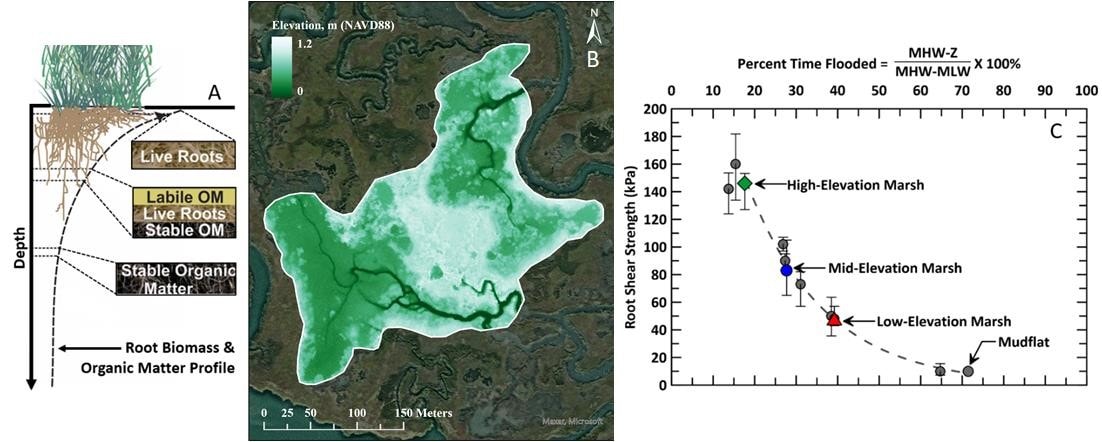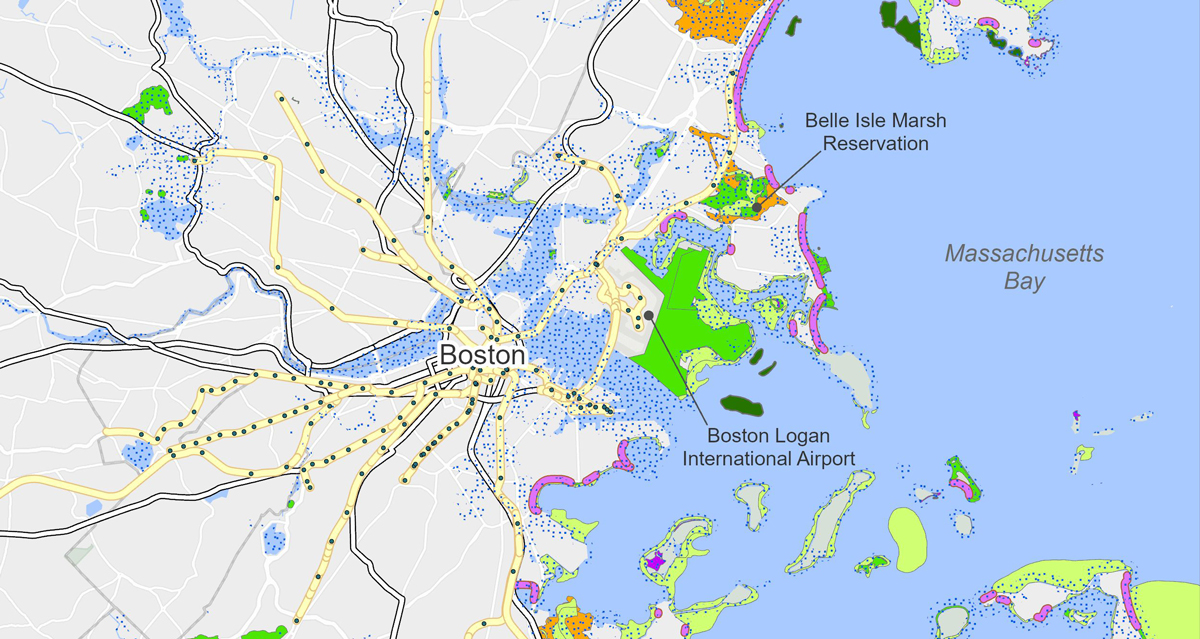Scotch Bonnet, NJ – Researchers from the U.S. Army Engineer Research and Development Center’s Coastal and Hydraulics Laboratory (ERDC-CHL) have deployed advanced geotechnical and ecological sensors at a critical coastal site to combat the degradation of New Jersey’s wetlands.
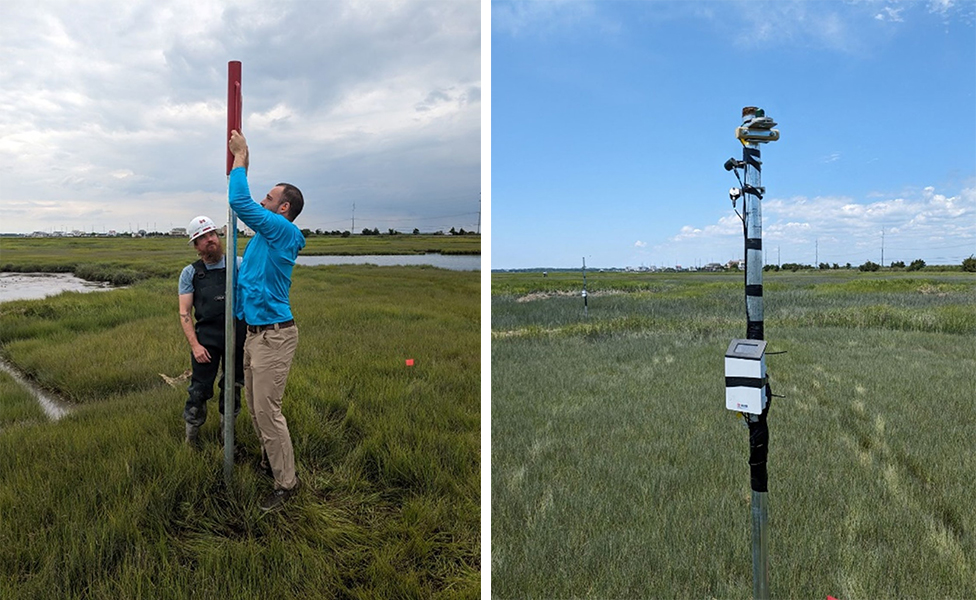
Addressing Wetland Degradation
In recent years, extensive areas of New Jersey’s coastal wetlands have been threatened by a combination of human activities and natural forces. These forces have caused elevations to drop, leaving wetlands frequently inundated and at risk of transforming into open water. This degradation has prompted a collaborative effort by the U.S. Army Corps of Engineers Philadelphia District (USACE-NAP), The Wetlands Institute (TWI), and New Jersey’s Department of Environmental Protection (NJDEP) to undertake a beneficial use of dredged material (BUDM) project aimed at restoring these ecosystems.
Deployment of High-Tech Sensors
EWN researcher Dr. Brian Harris led the ERDC-CHL team in deploying two key types of sensors at Scotch Bonnet, an area near The Wetlands Institute, which is facing severe wetland loss. The deployment includes Normalized Difference Vegetation Index (NDVI) sensors and extensometers to monitor the impact of upcoming sediment placement on the wetland environment.
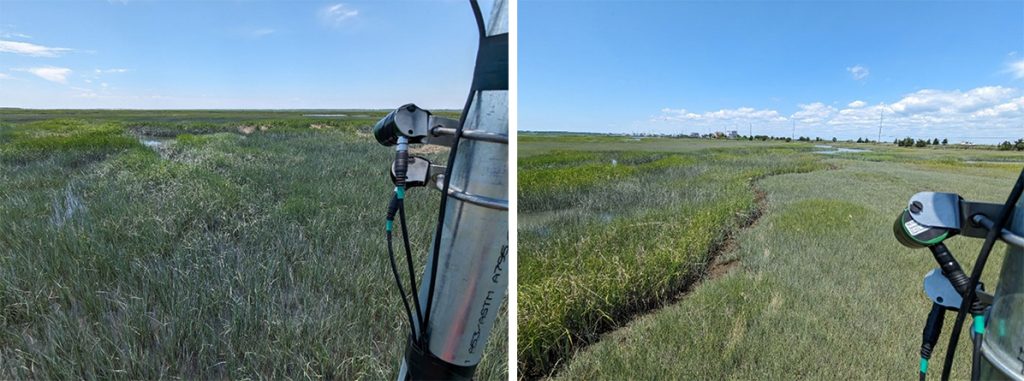
Monitoring Vegetation Health
The NDVI sensors, designed to passively collect red and near-infrared bands, measure the health and density of wetland vegetation. Three arrays of NDVI sensors were strategically placed across areas with varying vegetation vigor at Scotch Bonnet. These sensors will provide crucial data on how the wetland vegetation responds to the BUDM placement, offering insights into the effectiveness of this restoration strategy.
Understanding Wetland Failure Modes
In addition to NDVI sensors, two extensometers were deployed to monitor a growing crack in the marshland. Observations over the past few years suggest that sections of the marsh are being pulled apart, akin to a progressive landslide. The extensometers will help determine the dynamics of this failure mode, contributing to a better understanding of the underlying geotechnical issues.
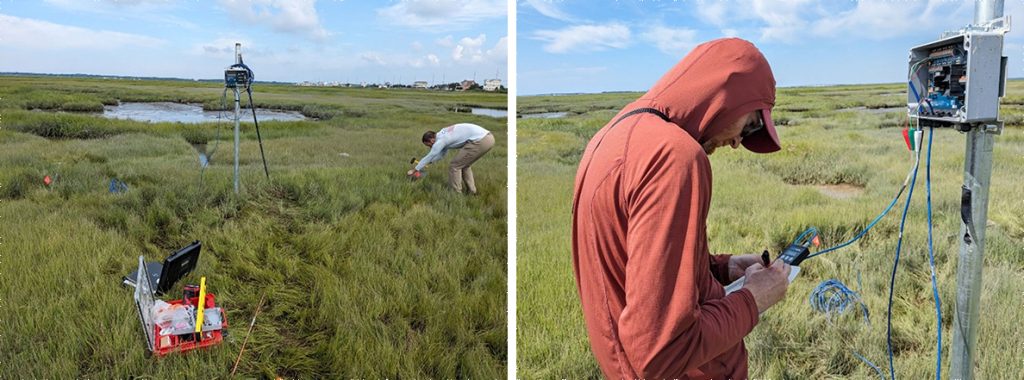
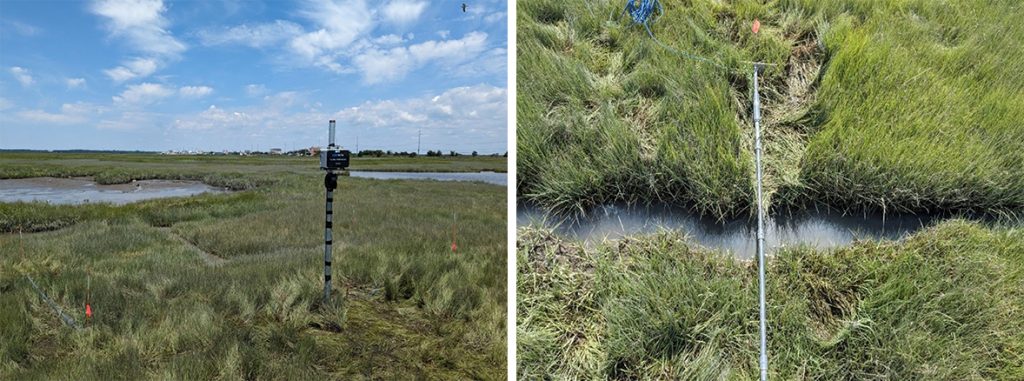
Upcoming Sediment Placement
Scheduled for fall 2024, the project involves extracting dredged material from the Atlantic Intracoastal Waterway (AICWW) and hydraulically placing it onto the marsh. This effort aims to elevate the marsh platform at Scotch Bonnet, which was inundated for an unprecedented 21 days this past January.
Future Implications
This deployment of sensors is part of a broader initiative to identify low-cost, robust solutions for monitoring wetland BUDM projects. The data collected will be vital in informing future restoration efforts and ensuring the longevity and health of the nation’s wetlands.
For more information, please contact Dr. Brian Harris.

